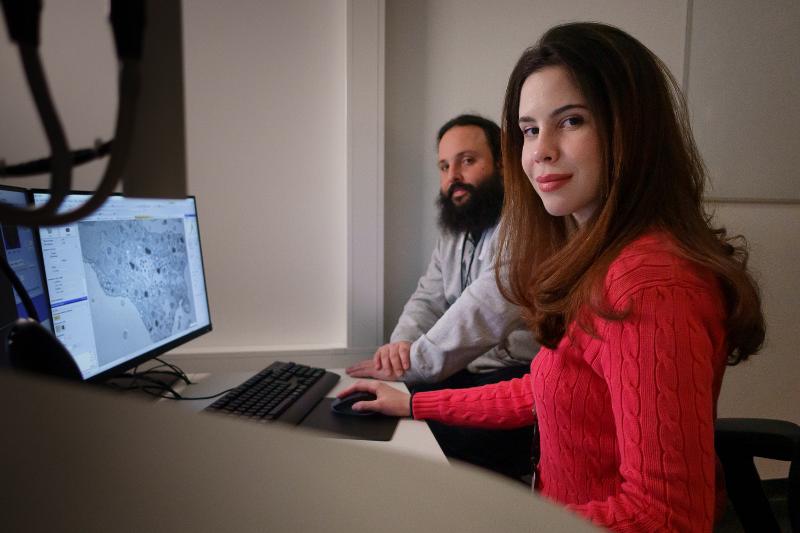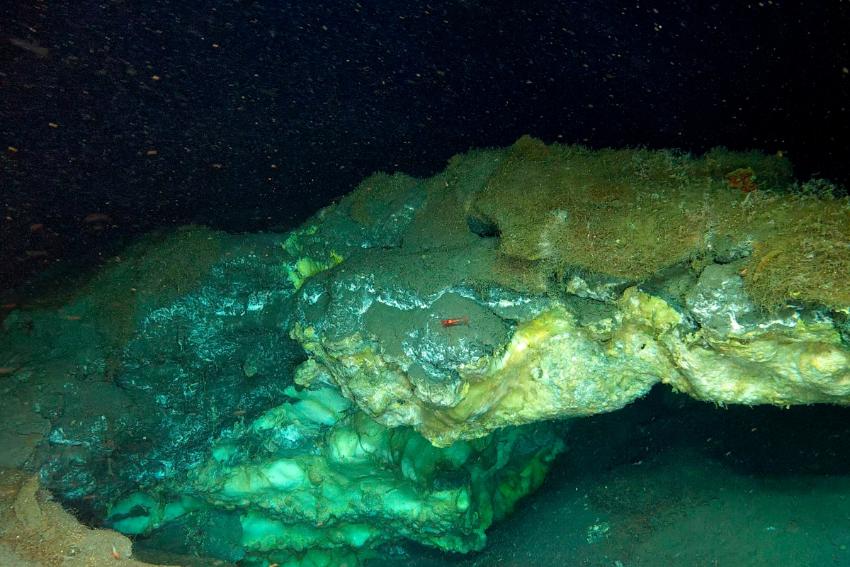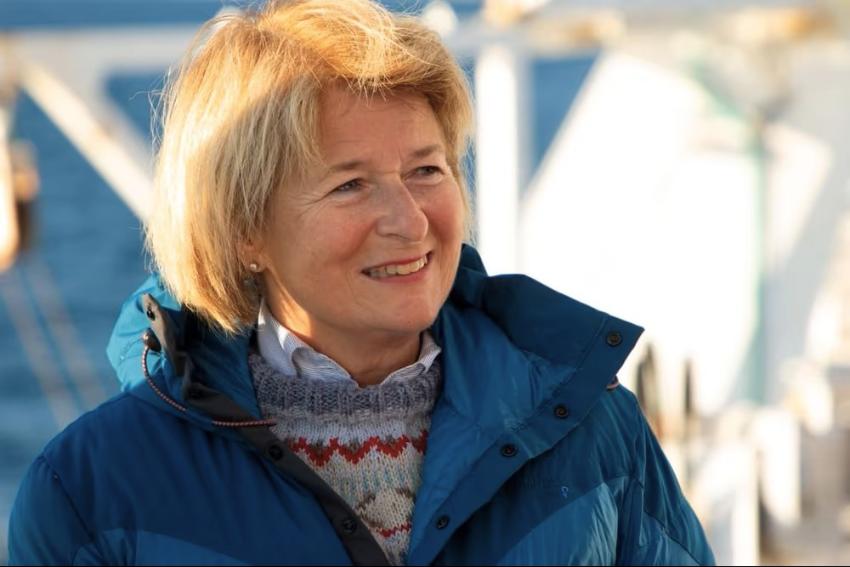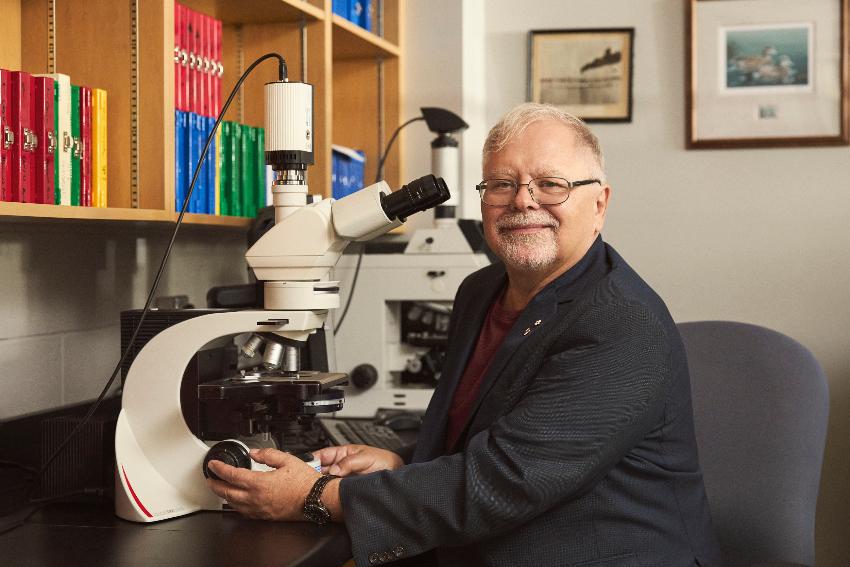The Arctic Giant from Tromsø
Researchers find the first giant virus from northern Norway.

Where there is life, there are viruses. This means that viruses are everywhere – from inside us to the deep sea. One of the reasons we don’t see them is their microscopic size. However, there are “giants” even among the smallest organisms on Earth. In the early 2000s, the world was surprised by the discovery of the first giant virus found in amoeba.
Although still microscopic, these viruses are far larger than other viruses and rivalled some bacteria in both size and in the amount of information inside their genomes. This discovery sparked two decades of research on these viruses that were hiding in plain sight.
Since then, different giant viruses had been found in many places – from the Amazon rainforest to the Siberian permafrost. Despite this remarkable presence seemingly everywhere, no giant virus had yet been isolated in the Norwegian Arctic to date. Until now.
Double the size of the corona virus
This changed when a collaboration between the Marine Bioprospecting group at UiT The Arctic University of Norway and the Giant Viruses Study Group of the Federal University of Minas Gerais in Brazil started. One visiting researcher from Brazil came to Tromsø, and after about a month she found the first Norwegian arctic giant virus.

The closest ones up discovered until this summer were the ones found in Siberia, one found in Central Finland, as well as three microalgae-infecting viruses from Raunefjorden, just south of Bergen in the western part of Norway. Now, the Norwegian Arctic too has been placed firmly on the giant virus distribution map.
We are now in the process of identifying this new virus. Genetic sequencing and visual imaging will be important to give it a name. Electron microscopy made at the Advanced Microscopy Core Facility at UiT has already revealed that it is one of the “smallest” giants, roughly twice the size of a SARS-CoV2. However, based on other similar viruses, we expect that it is likely coding for hundreds of genes more than the corona virus.
Getting upset now?
Not to worry. Giant viruses are luckily harmless to humans. Like most of the other viruses in our planet, they only infect single cell organisms and are unable to cause disease in animals and humans. Quite a relief after a recent pandemic, right?
Biological dark matter

So, what is the importance of isolating a new virus that does not cause harm to us? Viruses are the most abundant organisms on Earth, and they remain among the least understood. Each new virus that we isolate brings us relevant ecological insights and an abundance of new gene products to study.
It has been said that viruses are the source of most of the biological dark matter on Earth: a wealth of unknown genetic diversity that, when known and explored, could lead to amazing breakthroughs.
Giant viruses such as this one infects amoeba, and amoeba are also infected by bacteria. That suggests that the giants may be in conflict with bacteria while they are trying to replicate and grow in numbers. It is the age old battle for resources.
Now, we will focus on this new arctic giant to understand whether and how we can use its genetic information to develop new antibacterial strategies. Their large genomes, including more proteins that the virus needs just to copy itself, offer the potential to find what we are looking for.
Finding this first Norwegian arctic giant is a small step into the Norwegian giant virus world, but it could be a great leap for research into antibacterial mechanisms. Hopefully, this will bring big scientific surprises in the near future.
CANS – Centre for New Antibacterial Strategies
CANS is the main offensive from UiT The Arctic University of Norway in the battle against bacteria and antibiotic resistance. The main goals of the centre are to strengthen the research on antibiotic resistance, look for new antibiotics, and find good ways to manage the antibiotics that are already available to modern society.

-
Arkeologi - master
Varighet: 2 År -
Peace and Conflict Transformation - master
Varighet: 2 År -
Geosciences - master
Varighet: 2 År -
Biology - master
Varighet: 2 År -
Technology and Safety - master
Varighet: 2 År -
Public Health - master
Varighet: 2 År -
Law of the Sea - master
Varighet: 3 Semestre -
Biologi - bachelor
Varighet: 3 År -
Medisin profesjonsstudium
Varighet: 6 År -
Nordisk - årsstudium
Varighet: 1 År -
Luftfartsfag - bachelor
Varighet: 3 År -
Pedagogikk - bachelor
Varighet: 3 År -
Arkeologi - bachelor
Varighet: 3 År -
Bioingeniørfag - bachelor
Varighet: 3 År -
Informatikk, sivilingeniør - master
Varighet: 5 År -
Likestilling og kjønn - årsstudium
Varighet: 1 År -
Historie - bachelor
Varighet: 3 År -
Geovitenskap- bachelor
Varighet: 3 År -
Biomedisin - bachelor
Varighet: 3 År -
Kjemi - bachelor
Varighet: 3 År -
Psykologi - bachelor
Varighet: 3 År -
Samfunnssikkerhet - bachelor
Varighet: 3 År -
Ergoterapi - bachelor
Varighet: 3 År -
Fysioterapi - bachelor
Varighet: 3 År -
Radiografi - bachelor
Varighet: 3 År -
Samfunnssikkerhet - master
Varighet: 2 År -
Kunst - bachelor
Varighet: 3 År -
Kunsthistorie - master
Varighet: 2 År -
Farmasi - bachelor
Varighet: 3 År -
Farmasi - master
Varighet: 2 År -
Religionsvitenskap - årsstudium
Varighet: 1 År -
Romfysikk, sivilingeniør - master
Varighet: 5 År -
Klima og miljøovervåkning, sivilingeniør - master
Varighet: 5 År -
Sosialantropologi - bachelor
Varighet: 3 År -
Psykologi - årsstudium
Varighet: 1 År -
Historie - master
Varighet: 2 År -
Odontologi - master
Varighet: 5 År -
Tannpleie - bachelor
Varighet: 3 År -
Anvendt fysikk og matematikk, sivilingeniør - master
Varighet: 5 År -
Barnevernsarbeid - master
Varighet: 2 År -
Forfatterstudium 2 - årsstudium
Varighet: 1 År -
Sykepleie - master
Varighet: 2 År -
Fine Art - master
Varighet: 2 År -
Barnevern - bachelor
Varighet: 3 År -
Arctic Nature Guide - one year programme
Varighet: 1 År -
Sosialt arbeid - bachelor
Varighet: 3 År -
Arktisk friluftsliv og naturguiding - bachelor
Varighet: 3 År -
Arktisk friluftsliv - årsstudium
Varighet: 1 År -
Idrettsvitenskap - master
Varighet: 2 År -
Grunnskolelærerutdanning for 1.-7. trinn - master
Varighet: 5 År


